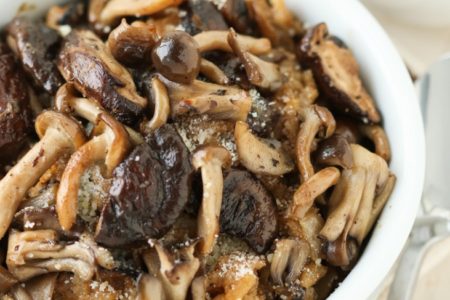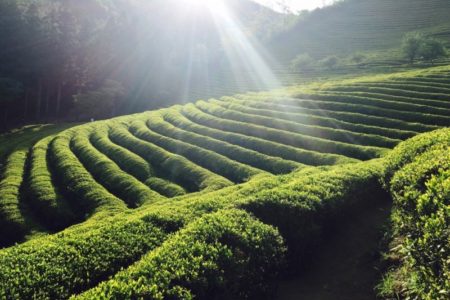Hawaii’s climate, soils and topography make it a natural place to grow tea. But the rich physical and biological diversity of the islands pose both opportunities and challenges for the first generation of Hawaiian tea producers.
Read More
Inspiring enthusiasts to refine their taste in tea
Hawaii’s climate, soils and topography make it a natural place to grow tea. But the rich physical and biological diversity of the islands pose both opportunities and challenges for the first generation of Hawaiian tea producers.
by Kevin Gascoyne
2016 was a good year for the growing tea industry in Australia. Australians have a history of being black tea drinkers and following their mostly British heritage, but that is rapidly changing. Gardens there specialize in Japanese and Taiwan style teas with a reputation for high quality and distinctive taste from the continent’s varied terroir.
by Sharyn Johnston
Jiangnan (literally means River South, refers to the area south of the Yangtze River in eastern China) region is the […]
by Lizheng Xiao
Photographs by Huiling Liang Jiangbei (literally means River North, refers to the area north of the Yangtze River in eastern […]
by Huiling Liang
Hawaii is experiencing the birth of a new cottage industry: tea farming. The American state is taking advantage of favourable terroir to build an environmentally sustainable industry. Its development approach is based on research, innovation and cooperation.
by Elyse Petersen
Tamiko Kinezuka: “We make tea with great effort, and hope you will drink our passion with your tea. As my father says, ‘Please taste the tea in one half of your cup, and the heart of its farmer on the other.’ “
by Ian Chun
Yiwu big tree puer has coarse stems and apparent long black strips. These big, slow-growing trees grow with minimal human […]
by Yang Li
With Taiwan’s compact size and its modern transport and communication infrastructure, one can easily visit a tea grower anywhere on […]
by Frank Miller
Taiwan has teahouses of every sort, from Laoren (old man’s) style where common tea leaves are steeped in ordinary drinking glasses, to quiet Daoist establishments, to modern shops where scanning social media sites on mobile phones and laptops is OK.
by Frank Miller
Bonsai master Bob Langholm offers these instructions for caring for a miniature C. sinensis plant in your own home. Leaves from the beautiful little tree on your table also make a fine cup of tea.
by Felicia Stewart
Just as in the world of tea, there is a gulf between mass-produced and master-produced bonsai. A true artist’s worth is measured by how well he manipulates a plant to make it a thing of enduring value, a work of living art that evolves and changes over time.
by Felicia Stewart
The English, says author and tea historian Jane Pettigrew, “have forgotten a lot of the importance, significance, and history of our tea drinking habits.”
by Liza Casabona
Nestled inside Hong Kong Park, the Flagstaff House Museum of Tea Ware, formerly known as Flagstaff House, was built in […]
by Si Chen
Storage is a challenge tea drinkers have struggled with for as long as Camellia sinensis has been part of our […]
by Nicole Wilson
Visit a Yixing store and it’s easy to feel overwhelmed by the wonderful selection of Zisha (‘purple clay’) teapots. Use […]
by Si Chen
This Keemun Mushroom Risotto is so hearty and satisfying that you’d never think it’s completely vegetarian. There are 2 star […]
by Bonnie Eng
As the weather warms and you fire up your grills, it is second nature to reach for an iced tea or Tea Sangria, but tea isn’t just great accompanying grilled food, it can play a role within that food as well. Consider Matcha and White Bean Dip, or upgrading your S’mores!
by Cynthia Gold
The benefits of tea may be due to its influence on the digestion of glucose (blood sugar), the ADA noted, or because of tea’s high polyphenol content.
by Stephenie Overman
Evidence dating to antiquity attests to the medicinal powers of tea, but Tetley foresees a future where “remedy teas,” teas […]
by Stephenie Overman
Consumer Reports’ writes that the risks of GTE include: “Dizziness, ringing in the ears, reduced absorption of iron; exacerbates anemia and glaucoma; elevated blood pressure and heart rate; liver damage; possibly death.”
by Stephenie Overman
Polyphenols in white tea are promising candidates to test for protection against neurodegeneration associated with diabetes, according to Dr. Branca […]
by Stephenie Overman
Tea first reached Iran by caravans traveling the Silk Road 450 years before the modern Christian era. Residents were largely […]
by Dan Bolton
Originating in Yunnan’s large-leaf species, pu’er tea can be stored for many years. Its aroma diminishes gradually. A latent note is uncovered as volatile aromatic compounds with a low boiling point dissipate. A quality piece of new raw pu’er cake with proper storage will develop a clean and robust grassy aroma and then flower, fruit, honey, plum, almond, and woody aroma, finally expressing the epitomic vintage notes.
by Si Chen
China’s southwestern region includes Tibet, Yunnan, Guizhou, Sichuan, and Chongqing. The southwestern region is the oldest tea producing region in […]
by Yang Li
Many tea connoisseurs wait for this first harvest each year, which is usually only available in very small quantities, and will most likely be gone within the first few months or even weeks of its harvest.
by Mina Park
FIRST EDIT: Sooz Aug 19 *Question – First paragraph, who/what are the “maui” ? I want to correct this sentence […]
by Cha Yu
Purchase this article now for $0.50: Purchase this Tea Report Or subscribe for full access. Tea Market Evince Leaf Circle: […]
by Janis Hashe


























